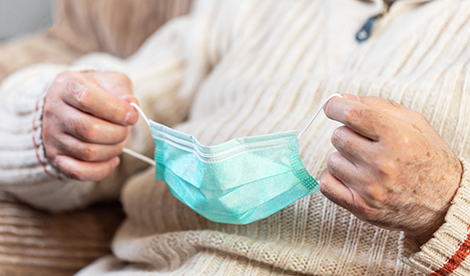

Blog

President’s Blog: Waning vigilance but COVID has not gone away
Friday December 1, 2023
COVID-19 is back in the public consciousness. Many of us have had at least a few friends, family members and colleagues go down with it for at least a few days over the past few weeks, or had it ourselves. Given that most of us are well-vaccinated, and the milder nature of the disease caused by currently circulating strains than earlier ones such as the Delta variant, the infection is usually mild.
But it has served as a reminder that adherence to booster vaccinations has significantly waned over the past 12 months, for us in many instances, and our patients. Furthermore, many patients in the community remain vulnerable to severe disease. Where earlier in the pandemic we saw a great amount of goodwill from the community to look after the vulnerable through distancing and mask-wearing, this has clearly waned, with voluntary mask-wearing for the protection of others now apparently extremely uncommon.
The fact is, COVID has not gone away. Long gone are the days when we needed to hear about it daily, but its effects are still felt in the form of unwell patients, and absenteeism in the health system putting extra pressure on doctors and other health workers.
Our expert colleagues in fields including Public Health, Infectious Diseases, Clinical Microbiology, Occupational Medicine, Medical Administration, and others are more than equal to the task of advising Government regarding the risk to individuals and the healthcare system posed by COVID outbreaks. Health officials and governments need to factor this information into what they consider to be acceptable and proportionate responses. Few are calling for widespread mandated mask-wearing. Mask-wearing around vulnerable patients or in outbreak areas in our hospitals is a reasonable requirement in the setting of the current outbreak, but the settings need to be tailored to the risk environment. If more dangerous strains were to emerge, coupled with waning immunity from under-vaccination, more stringent options should remain available.
The current resurgence of COVID is reminiscent of that witnessed in April and May. Vulnerable populations, particularly long-stay elderly patients, are again facing increased risks. The trends of nosocomial infections, high attributable mortality, and extended hospital stays are re-emerging, highlighting the persistent and dynamic nature of this virus. These developments reinforce the need for continued vigilance and proactive measures in our approach to managing COVID within our healthcare facilities.
“Living with COVID” is an evolving concept. Earlier in the pandemic and prior to the availability of vaccinations, it had a negative connotation, as it was used by some world leaders as a euphemism for “letting it rip”. Later, in the post-vaccination era, it was used, not entirely without controversy, as restrictions eased up and the virus was permitted to spread through the community. At that time, the Australian Chief Health Officer, Dr Paul Kelly, called for an end to “COVID exceptionalism”. Whilst this statement raised a few eyebrows at the time, it’s useful in informing what “living with COVID” means now. It does not mean pretending it doesn’t exist, or that we aren’t going to see further waves of infection. It means that while COVID might be a unique pathogen, so too are HIV, influenza, Ross River Virus, and thousands of other pathogens which all require ongoing preventive measures, diagnosis, treatment, monitoring and research. In that sense, none of these are exceptional. They are all pathogens of which we should be aware, about which we should educate the public, and from which we should protect ourselves when necessary.
We should ensure that the most vulnerable are protected. But as a community, it is not likely to be helpful to exist in constant anxiety about COVID, any more than it is about any other infectious disease. As we adapt to the concept of ‘living with COVID,’ it’s crucial to address the specific risks it poses within healthcare settings. While we advocate for normalized living with COVID, we must also recognize that its management in healthcare settings requires a more cautious and preventive approach. Regular mask usage, staying home when unwell, and routine testing are not overreactions but necessary steps to protect our patients and ourselves.
Follow me on Facebook: facebook.com/AMAWAPresident
Follow me on Twitter: twitter.com/AMA_WAPresident

